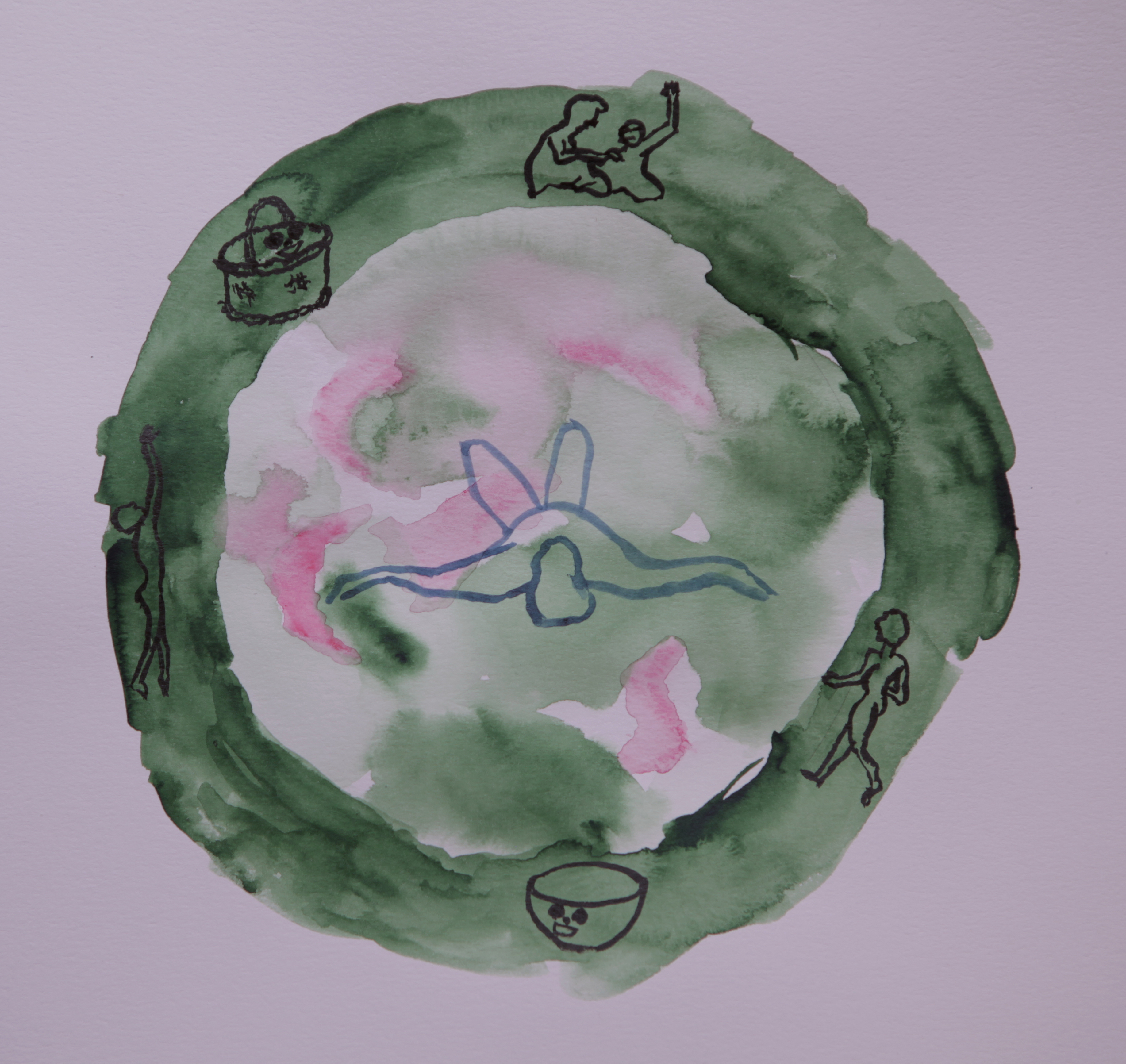
In The Curve
(Ursula K. Le Guin’s text has some neolithic period characters: a protagonist hunting for oats with Ool; and then hunting for meat with fellow hunters Oob and Boob; and looking after baby Oo Oo.)
I first heard of Carrier Bag Theory in Donna Haraway’s 2016 book ‘Staying With the Trouble’. Grieving for species extinction, she writes, ‘It matters what stories we tell to tell other stories with’. In attempting to make thinkable our co-existence with nature, where humans are posthumus* in a multi-species co-mingling on this earth, she quotes Le Guin’s theory as a way of storytelling avoiding the heroic protagonist;
The last thing the hero wants to know is that his beautiful words and weapons will be worthless without a bag, a container, a net.
… A leaf a gourd a shell a net a sling a sack a bottle a pot a box a container. A holder. A recipient.
As I was putting together my recent documentary about a collective of cooks at Bonnington Cafe in South London, I kept thinking about this. Firstly in a very literal way, that the restaurant needed pots and containers to happen at all, but then more as a metaphor to describe how there is no individual person making the situation happen – it is a constellation of human and non-humans. I feel Ursula’s quick reference to pots and bags in stories, takes the attention away from the human as the main driver.
As I edited the film, scenes for me, instead of linear narratives, became baskets containing things, endlessly offering basket-ness and being a container of a collective and a collective to come.
Carrier Bag Theory is non-theoretical for me. It is felt – I know really well the physics of containers, and they are an ongoing everyday engagement, and could be, if I wanted a reminder I don’t need to be proving my worth by stepping forth with a spear!
Think of a cherry rolling around in a bowl. There is no beginning and no end for the cherry. It is in the curve. Could this be a way of imagining my way out of fixity, of an undesirable linear narrative I find myself in?
* Haraway uses the term ‘posthumus’ as a play on the word post-human. It implies humans as returning to and eventually will become soil, rather than human-centred tech implied by the post-human.
Joseph Walsh is an artist based in London working mainly in film. Walsh is interested in how the self is described in filmic storytelling and how this can extend to how people can be together and that this includes the non-human such as rituals in food, interspecies co-habiting and plant intelligence.
Select exhibitions include Human Machine Interface, Hilbert Raum, Berlin; Greenhouse Effect, Beaconsfield Gallery, London; Date With Thyme, ANDOR, London; Swamp Living, co-organised workshop at IMT Gallery, London; performance at The Showroom, London as part of LUX AAP programme; and 21st Century, a performative presentation at Chisenhale Gallery.